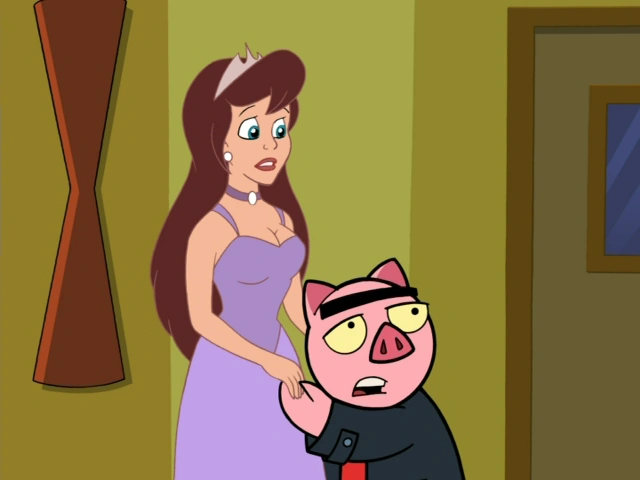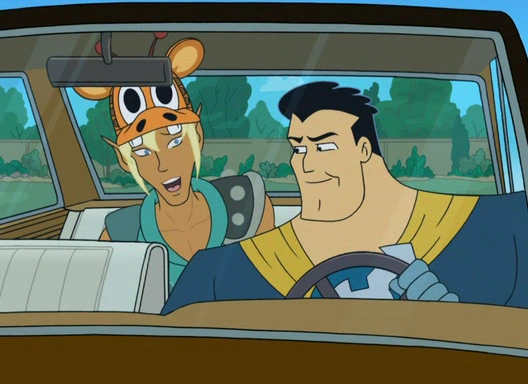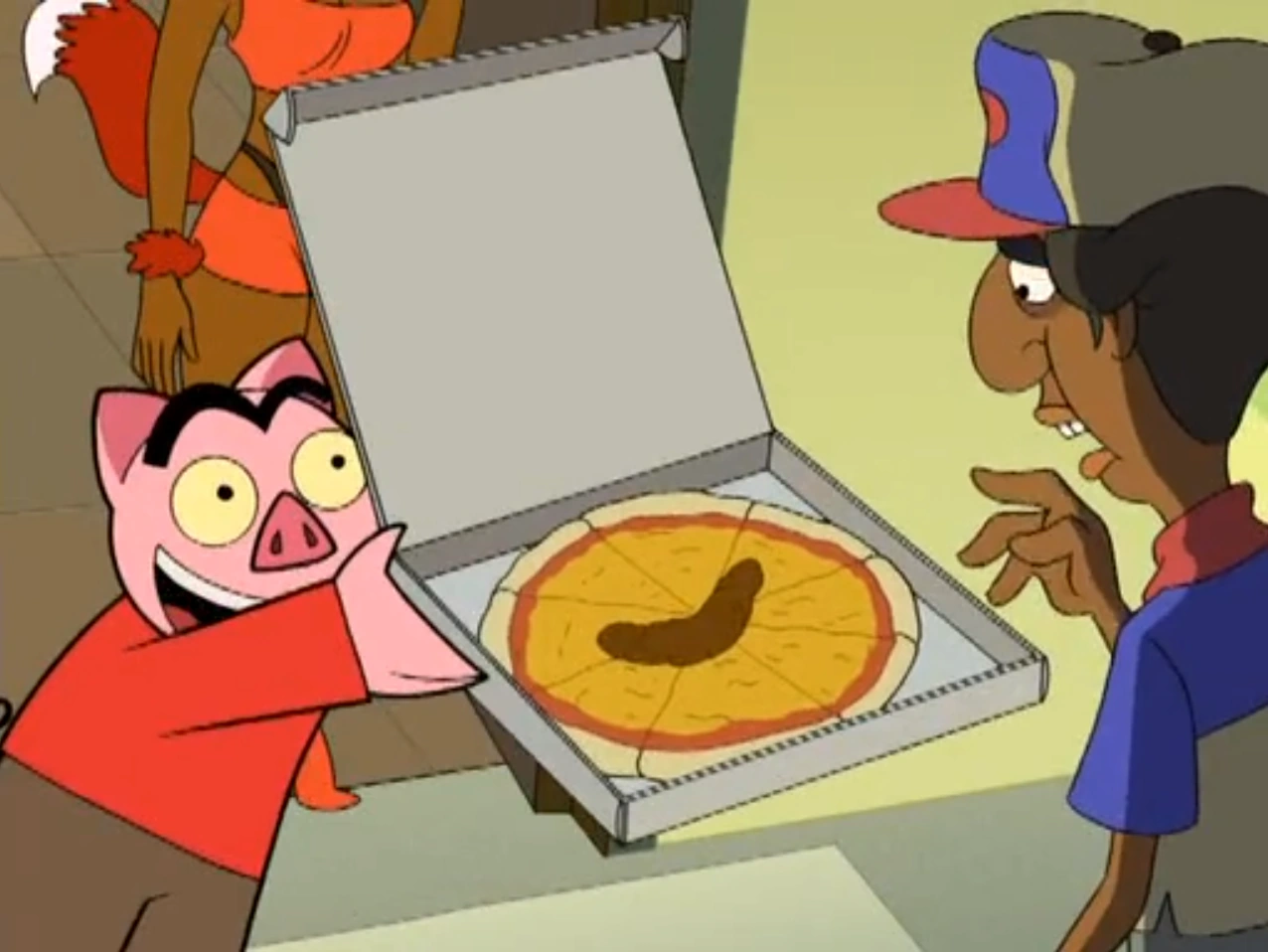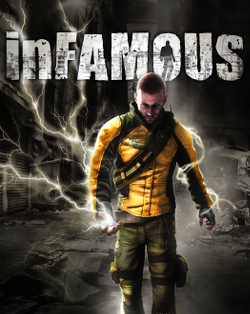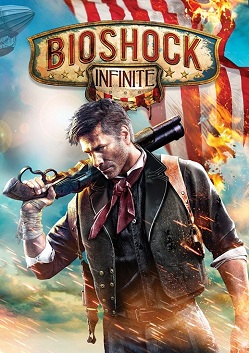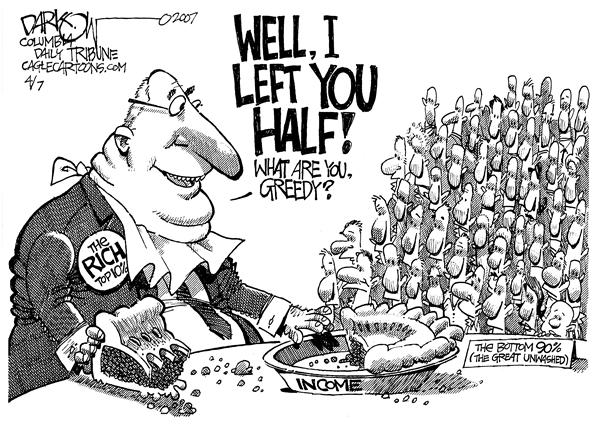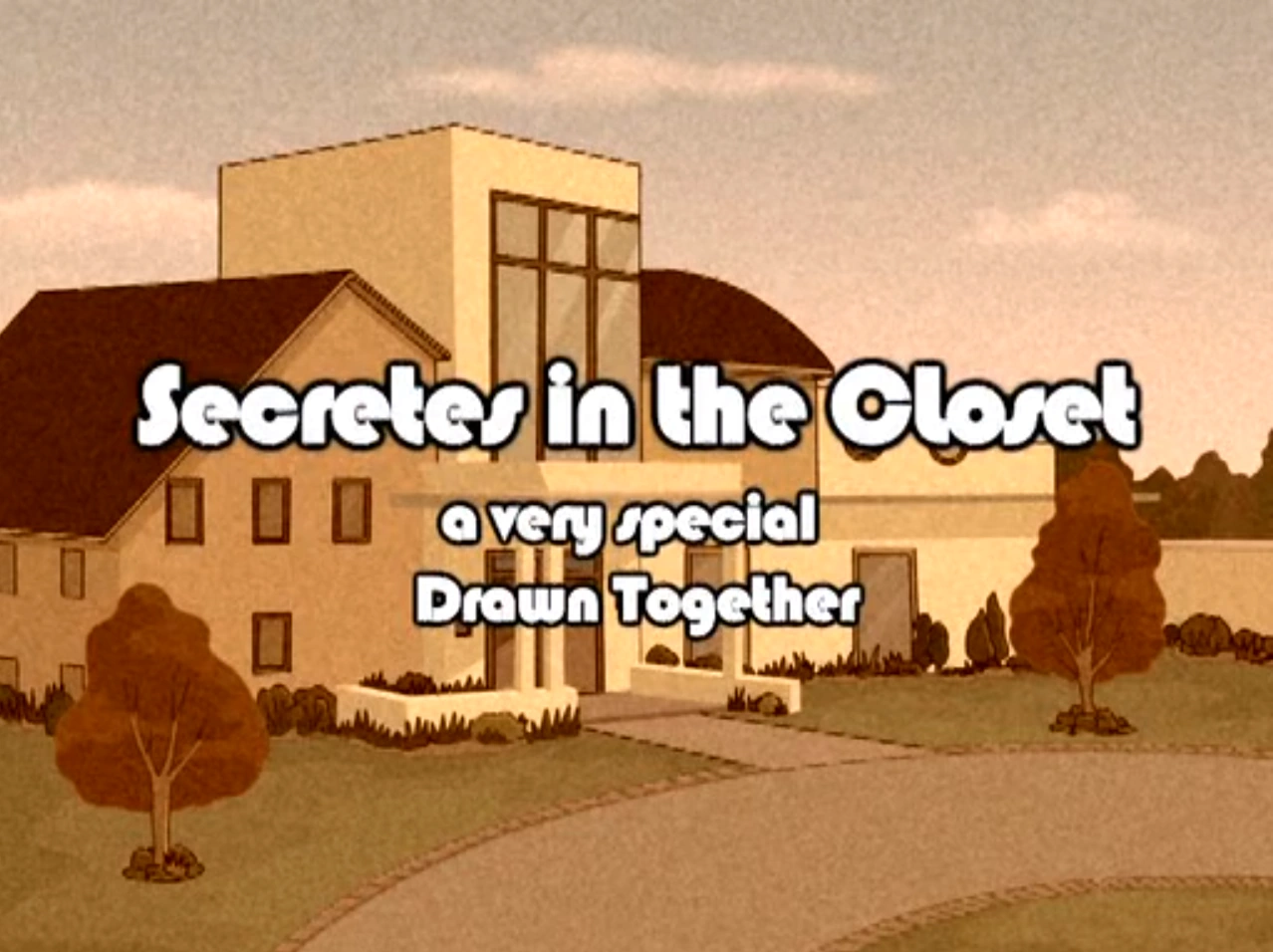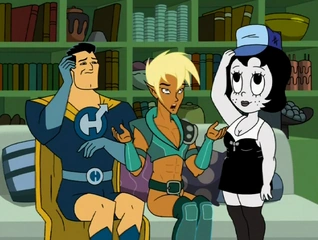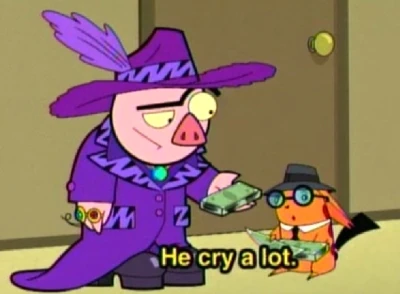Sunday, March 20, 2016
This blog is now retired.
Sorry guys, but I've lost a lot of inspiration for this blog. I can't really think of anything special to post here anymore, so I'm shutting this down.
Tuesday, February 16, 2016
Liberal Rant: The Supreme Court
Cartoon by Nick Anderson.
Antonin Scalia has died, and already conservatives are trying to frame his legacy as a staunch originalist who ruled based on what the law said, not what the political trends were. Liberals such as myself have a hard time swallowing that pill, as we see him as more of an actively conservative judge who ruled largely along ideological lines. I personally find it hard to believe an originalist would side with Hobby Lobby and rule that limiting campaign contributions from corporations was a detriment to free speech. Regardless, I don’t think his legacy will become clear until well after his death. It’s easier to judge the dead long after the fact.
As of writing this, Scalia’s seat on the Supreme Court has not been filled, nor has Obama nominated a replacement. Yet already we see congressional Republicans lining up behind Mitch McConnell in his move to block any Supreme Court nominee until a new president is elected. Their reasoning is that Obama should not be able to pack the court with another liberal justice, tilting the Supreme Court to the left and making it easier for activist rulings to be issued.
There’s something shocking yet depressingly familiar about having one of America’s two major parties being willing to paralyze one of the biggest institutions in the country to score political points. Republicans have been blocking Obama’s nominees ever since he took office, forcing many agencies to go without leadership for months or even years. Republicans, despite trying to brand themselves as something other than the party of “no,” are taking this to the logical extreme with this recent stance against replacing Scalia. This is somewhat expected, but it doesn’t make it any less egregious.
Let’s start with the obvious here. We have an odd number of justices for a reason: to prevent ties. With an even number of justices, ties are much more likely to happen, meaning that the Supreme Court can effectively deadlock itself. And given how the current make up is four liberal justices and four conservative ones, that seems very likely to happen. Republicans have already paralyze the legislative branch with their posturing and obstructionist reactionism. If they are successful in their latest venture, then they will have paralyzed the judicial branch as well. Once again, Republicans are letting politics get in the way of actual governance.
Second, it’s the president’s constitutional authority to fill vacancies in the Supreme Court. In one of the greatest ironies in this administration, the party that thumps and invokes the Constitution the most are trying to prevent Obama from doing his constitutional duty. By preventing Obama from doing his job for the sake of politics, they are ignoring (or even defying) their beloved document that Democrats always seem to violate. Despite trying to protect the legacy of a supposed originalist and literalist, they are going against what the Constitution literally says. I hope the irony is not lost on those fellows.
Third, and most importantly, Republicans don’t even have to do what they’re doing to get someone they like nominated. I don’t know if McConnell, Cruz, and their kin realize this, but they have a majority in the Senate. This means even if Obama wanted to pack in an activist liberal, he couldn’t, because the Senate could just kill the nomination. At this point, if Obama wants to make good on his promise, he’ll need to nominate a moderate or a conservative to the bench. In other words, this posturing by the Republicans is totally unneeded, as they can still get a conservative justice despite Obama being in office.
The Republicans latest ploy is facepalm-worthy, not only because they’re prioritizing politics over the functionality of one of the country’s most vital institutions, but also because they can get their way without having to openly state their plans to block any nominee. This isn’t overplaying their hand, this is them revealing their hand before the dealer reveals his when the odds are already in their favor. In a sense, Republicans have already lost whatever they were trying to accomplish, as they’ve pretty much cemented themselves as a party of obstructionists, not conservatives. I don’t know whether I should be celebrating or shaking my head.
Friday, February 12, 2016
Drawn Together Picked Apart- Dirty Pranking No. 2
All pictures are from the Drawn Together Wiki.
Episode Number: 6th in season one, 6th overall
Original Airdate: December 8, 2004
Focuses: Clara, Captain Hero
Since the last two episodes I’ve reviewed were good episodes, I figure it's time I tackle an episode that I dislike. While Drawn Together can be clever as well as offensive, sometimes it forgets to be clever and just jumps straight into being offensive. This is one of the episodes. What’s wrong with it? Let me tell you.
Plot Summary
Clara feels like she’s missing something in her life, as princesses are often want to do. When she discovers Foxxy and Spanky pranking a pizza man; Foxxy pays for the pizza, while Spanky defecates on it. Spanky then presents the pizza, claiming he didn’t order the pizza with “sausage.” Clara joins in on the pranking, bonding with Spanky in the process. This continues until Clara’s father, the king, threatens to take Clara home if she continues her behavior. Clara defies her father, however, and eventually carries out a final prank with Spanky. Her father realizes how happy pranking makes her, and decides to let her stay with the Drawn Together crew.
Meanwhile, Xandir tries bonding with Captain Hero, but Hero keeps standing him up for his heroic duties. When Xandir gets upset, Hero decides to stand up his latest job (stopping an invading army of robotic bugs with hats) to take Xandir to the zoo. They have a great time, but everyone on Earth, including the Drawn Together crew, are vaporized by the bugs. The bugs then take the “sausage pizza” prank back to their planet.
Best Moment
Captain Hero has to stop a terrorist threat in the Middle East. In Superman fashion, he tears off his clothes to reveal his costume...which is the exact same outfit he had on before.
Worst Moment
Clara tries to join in on the sausage pizza prank by offering the money to pay for it. Spanky assumes the money is for something else, and whips out his “thick eight,” his hog penis. Clara recoils in horror, and protests until Spanky puts it back in.
Season One has several gags revolving around Spanky’s penis, by the way. This is probably the worst of them.
The Good
This episode is not without its good parts. The subplot is quite good, with some funny gags, including one where Xandir and Hero enjoy their zoo visit while the entire world collapses around them. Any moment with Toot is a great one, including one where she asks Captain Morgan (a bottle of rum) why he doesn’t love her back, smashing the bottle against a wall, and “saves” him by licking the rum off it. There are some jokes in the main plot that work rather well, and Clara’s ark is actually good satire. It shows me there was a good premise behind Clara’s character before she turned into a generic religious right caricature.
The Bad
That being said, there’s plenty wrong with this episode. For one, every joke that doesn’t hit is cringeworthy. There’s one where a kiss goodbye between Clara and her father turns into a makeout session. There’s one where when Wooldoor is not invited to the zoo with Xandir, he takes a sniper rifle and remarks, “I’ll be in the clocktower.” Spany has a line where he remarks that the mistake he made was nearly as bad as converting to Islam in August of 2001. None of these jokes are particularly clever, and just seem there to punch decency in the face. There’s also a lot of imagery problems in this episode, especially the crap on the pizza (yes, they actually show it). This episode is not clever enough with most of its jokes to save itself from being far more tasteless than funny.
Ratings
Hilarity Meter ™ : 2/5 (Pretty Funny)- The gags that work are quite good, but most of them are far more tasteless than funny.
Offense-o-Meter ™: 4/5 (Very Offensive)- Incest, threats of eye gouging, hog penis, and tons of poop jokes make up his episode; all of it offensive, none of it clever.
Verdict: 2/5 (Mediocre)- This isn’t a good episode, and like half of Season One, it is totally worth skipping.
Thursday, February 11, 2016
Press Start vs Mecahnime: Super Robot Wars Z3.2 Playthrough (part 3)
This is me playing Chapter 2 of SRW Z3.2. Enjoy!
Sunday, February 7, 2016
Press Start: Top Five Redeemed Games
All pictures are from Wikipedia.
They say that all people deserve second chances, and given my experiences as a gamer, I think it can be applied to video games. Sometimes when a game rubs me the wrong way, I tend to abandon it, but when I revisit it, my opinions of it change for the better. Sometimes it could be because of disappointment, going in with bad faith, or just expecting something different than what the game offers. These five games are games that, upon revisiting, were truly great experiences that deserved my praise the first time around. Let’s get started.
Growing up, I played more Final Fantasy spinoffs than actual Final Fantasy games. I remember loving Tactics Advance, but two games I don’t remember enjoying was Tactics Advance 2 and Chocobo Tales. I have no plans to revisit the former, given how I remembered it as truly bad, but I gave Chocobo Tales a second shot. Instead of being as average as I remember, it turned out to be quite good.
Chocobo Tales is basically a Mario Party game with a Final Fantasy skin, but it stands out to me for several reasons. For one, the minigames utilize a pop-up book style that makes the game very pleasant to look at. The minigames themselves are fun and engaging at the best of times and just boring at the worst. The game also comes packing a card battle minigame, which in my opinion is the true star of this game due to its animations, strategy, and oddly addicting deck building system. And of course, this game is cute beyond words. This game may be a minigame collection, but it's a damn good one with a lot of polish and heart.
InFamous has on my “to play” list for a long time, and as soon as I got a PS3, I tried to get my hands on it. I was interested to see what Sucker Punch could do outside of Sly Cooper. At first it struck me as an edgy and clunky superhero game, but after it some time, I found that it was an edgy and solid superhero game.
InFamous is rough around the edges. The combat isn’t that engaging, the world tries far too hard to be dark and edgy, and it takes a while to get enough powers to make the game interesting. But despite this, I’m glad I gave this game a second chance. Traversing the city, especially when you get new powers, is always a blast. Cole can actually be an interesting character sometimes, and the story is surprisingly strong. While battles with basic enemy grunts can be repetitive, battles with stronger enemies can be intense and engaging, and the boss battles can be fantastic. While not as strong as Sly 2, Sucker Punch delivered a solid first entry in a likewise solid series.
I didn’t get far into the first Bioshock. True, it was a visually masterpiece, and was very atmospheric, but the gameplay was not engaging enough for me to explore the otherwise fascinating city of Rapture. I gave the series another chance with the latest game in the series, and I was hooked.
Bioshock Infinite has all the strong points of the original Bioshock: an atmospheric and fascinating world, a great story, and absolutely beautiful graphics. However, what really got me hooked on Infinite was the gameplay. The gunplay this time around was far more engaging and challenging, and the spells you learn feel far more important in combat than in the originals. Add in elements like the skyhook and Elizabeth’s ability to open rifts, and you have an amazing package. I know actual fans of Bioshock might have issue with Infinite, as it’s more action oriented than the others, but for me it made all the difference.
I’ve said previously that Gen 2 was my least favorite generation of Pokemon. When I made this statement, I was basing this off my experiences with HeartGold/SoulSilver, which didn’t make a good first impression with me. After playing HeartGold again, I take it back. In fact, HeartGold is one of the stronger Pokemon games out there.
The core gameplay of HeartGold is the same as most Pokemon games, but the fundamentals here are especially strong. Johto’s regional catalogue of Pokemon is pretty good, and carries a strong sense of nostalgia. The boss fights, while not terribly challenging, can still be entertaining, and can offer a true sense of progression. The environments are charming and pleasing to look at. But most importantly, it’s fun in that classic Pokemon sense. HeartGold is this high up not only because it's a strong Pokemon game, but because it really overcame the terrible first impression it made on me.
Oh, and for the none of you that care, Gen 6 is shaping up to be my least favorite generation.
Very few games left as terrible a first impression as Shadow Dragon. As a fan of Fire Emblem, it felt very underwhelming, and it lacked things that drew me to the series in the first place. Over time, however, my opinion on it has evolved to the extent that now I think it’s one of the strongest Fire Emblems.
Yes, Shadow Dragon has its share of flaws, mainly in terms of the overabundance of units and how only Marth can visit villages. However, the core of what makes Fire Emblem great is there. It has engaging and thought provoking maps, as well as great fantasy world with political intrigue. The core combat and strategy is as strong as ever, and every move counts, especially if you want to recruit all playable units. It also deserves props for introducing reclassing to the series, and for implementing it in a way that doesn’t break the game. Shadow Dragon is becoming one of my favorite DS games, and I can think of no other game that I’m glad I gave a second chance.
They say that all people deserve second chances, and given my experiences as a gamer, I think it can be applied to video games. Sometimes when a game rubs me the wrong way, I tend to abandon it, but when I revisit it, my opinions of it change for the better. Sometimes it could be because of disappointment, going in with bad faith, or just expecting something different than what the game offers. These five games are games that, upon revisiting, were truly great experiences that deserved my praise the first time around. Let’s get started.
#5- Final Fantasy Fables: Chocobo Tales
Chocobo Tales is basically a Mario Party game with a Final Fantasy skin, but it stands out to me for several reasons. For one, the minigames utilize a pop-up book style that makes the game very pleasant to look at. The minigames themselves are fun and engaging at the best of times and just boring at the worst. The game also comes packing a card battle minigame, which in my opinion is the true star of this game due to its animations, strategy, and oddly addicting deck building system. And of course, this game is cute beyond words. This game may be a minigame collection, but it's a damn good one with a lot of polish and heart.
#4- InFamous
InFamous is rough around the edges. The combat isn’t that engaging, the world tries far too hard to be dark and edgy, and it takes a while to get enough powers to make the game interesting. But despite this, I’m glad I gave this game a second chance. Traversing the city, especially when you get new powers, is always a blast. Cole can actually be an interesting character sometimes, and the story is surprisingly strong. While battles with basic enemy grunts can be repetitive, battles with stronger enemies can be intense and engaging, and the boss battles can be fantastic. While not as strong as Sly 2, Sucker Punch delivered a solid first entry in a likewise solid series.
#3- Bioshock Infinite
Bioshock Infinite has all the strong points of the original Bioshock: an atmospheric and fascinating world, a great story, and absolutely beautiful graphics. However, what really got me hooked on Infinite was the gameplay. The gunplay this time around was far more engaging and challenging, and the spells you learn feel far more important in combat than in the originals. Add in elements like the skyhook and Elizabeth’s ability to open rifts, and you have an amazing package. I know actual fans of Bioshock might have issue with Infinite, as it’s more action oriented than the others, but for me it made all the difference.
#2- Pokemon HeartGold and SoulSilver
The core gameplay of HeartGold is the same as most Pokemon games, but the fundamentals here are especially strong. Johto’s regional catalogue of Pokemon is pretty good, and carries a strong sense of nostalgia. The boss fights, while not terribly challenging, can still be entertaining, and can offer a true sense of progression. The environments are charming and pleasing to look at. But most importantly, it’s fun in that classic Pokemon sense. HeartGold is this high up not only because it's a strong Pokemon game, but because it really overcame the terrible first impression it made on me.
Oh, and for the none of you that care, Gen 6 is shaping up to be my least favorite generation.
#1- Fire Emblem: Shadow Dragon
Yes, Shadow Dragon has its share of flaws, mainly in terms of the overabundance of units and how only Marth can visit villages. However, the core of what makes Fire Emblem great is there. It has engaging and thought provoking maps, as well as great fantasy world with political intrigue. The core combat and strategy is as strong as ever, and every move counts, especially if you want to recruit all playable units. It also deserves props for introducing reclassing to the series, and for implementing it in a way that doesn’t break the game. Shadow Dragon is becoming one of my favorite DS games, and I can think of no other game that I’m glad I gave a second chance.
Sunday, January 31, 2016
Drawn Together Picked Apart: Why Clara is My Least Favorite Character
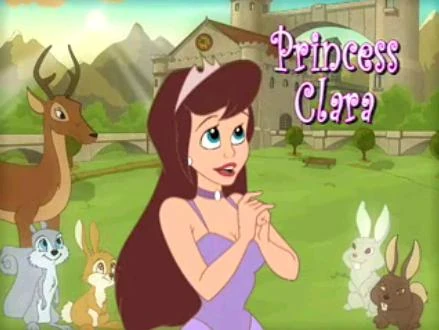 |
| Source: The Drawn Together Wiki |
Like all shows I enjoy, there are some characters I like more than others. In the case of Drawn Together, my least favorite character would be Princess Clara, the Disney princess parody. Now usually when I have a least favorite character, I don’t really think about why I hate them. Usually it doesn’t require much thought, as they’re hateable or unlikable for simple reasons. However, there’s actually a more complex reason to why I dislike Clara. The short answer is that they derailed her character when they had something good. This post is meant to be the long answer.
When you think about Disney princesses, or at least the princesses before Tangled, they all have a few things in common. The two biggest are a sense of naivety and innocence. This was the basis of Clara’s character in the first season, and it worked. Clara was very naive, having little knowledge of how the outside world worked, and her innocence meant that she has no idea what she’s doing or what she’s saying might be offensive. This is actually good satire, as it understand the source material and adds a clever comedic dimension to it. It would allow Clara to say things like “can’t you just stop being gay” to Xandir not out of spite but out of naivety, not realizing what she’s saying is offensive.
This was a great basis for a character, and it felt like they actually put thought into it. This is what makes the next few things unfortunate.
By the second season, Clara dropped the “innocent” part of her character in favor for something more malicious. Whereas early Clara said offensive things because she didn’t know any better, later Clara said offensive things knowing that they were offensive. Her character went from being offensive but well meaning to basically being a fundamentalist Christian. Here, she began saying and doing offensive things knowing fully well they were racist/anti-semitic/homophobic/whatever, rather than saying the offensive things innocuously. They abandoned something clever for something lazier.
And this leads to my biggest reason I dislike Clara: they turned her into the show’s villain. In a show like Drawn Together, where every character has something wrong with them (Wooldoor’s need to seek approval from everyone, Xandir’s extreme promiscuity, etc.), it seems pointless to have Clara be the one acting out the most. Yet several plots of the show revolve around Clara kickstarting the plot by being an antagonist. This is a lazy route to take with a Disney princess parody; turning someone who is supposed to be pure and making them evil is not clever or insightful. Her general behavior as the villain is also reprehensible, and out of all the characters, her jokes miss the most for me.
Clara started as something that had potential. She started as a character with an actual clever twist on the Disney princess, yet the show abandoned that for a lazier charactacure. Clara is my least favorite character on Drawn Together because her potential was never fully realized.
Saturday, January 30, 2016
Press Start vs Mechanime: Super Robot Wars Z3.2 Playthrough (part 2)
Tuesday, January 26, 2016
Press Start vs Mechanime: Super Robot Wars Z3.2 Playthrough (part 1)
This Christmas I finally got my hands on Super Robot Wars Z3.2, and since I haven't done anything mecha related for a while, I'd thought it would be cool if I shared my playthrough with you guys. I plan to post a video at least once a week.
This first video is the two prologue chapters, which is primarily to introduce the player to the game's mechanics. It really shows off what some of your units can do in terms of battle.
I apologize for the terrible editing. This is my first major experience with video editing. Hopefully it's not too big a distraction.
Enjoy!
Friday, January 22, 2016
Liberal Rant: The New Gilded Age
The Gilded Age was an era in American history lasting from the end of Reconstruction to the election of Theodore Roosevelt, or 1877 to 1900. The era’s name comes from Mark Twain, remarking on the dangerous inequality and unequal distribution of wealth of the day, suggesting the growth was superficial, like a gold coating hiding something of little worth. The era was marked by gross income inequality (one estimate suggests that the top 1% of Americans owned 45% of the nation’s wealth), crippling poverty, volatile and devastating downturns, monopolies, lawmakers in the back pockets of corporate interests, and a vilification of the poor and labor unions. It is regarded as one of the darker periods of American history, and was home to the then biggest economic downturn of all time.
We’d like to think we’re beyond that, but reality begs to differ. In many ways, our era bears an unsettling resemblance to the Gilded Age. The top 1% owns more wealth than the rest of the nation combined. The world is still suffering the consequences of a massive economic downturn. Corporate regulations are continuously being loosened, and our top politicians are dependant on the money of the elite. Labor unions and the poor are blasted, the former for being a business killing blight that outstayed its welcome, and the latter for being lazy leeches that are totally dependant on the government.
The comparison isn’t perfect. For one thing, the biggest employer of the Gilded Age was manufacturing, not service. The poor are generally better off than their Gilded Age counterparts. The biggest money makers in the economy is now finance, not steel or railroads. The prevailing Social Darwinist ideologies have been replaced with Libertarianism, though the similarities between the two are startling. But where the two eras share similarities are the most important, and perhaps the most defining challenge of our era.
There are many problems with having a second Gilded Age. For one, the original era showed us the danger of power being in the hands of too few. By simply buying our legislatures, the wealthy of then and the wealthy of now are able to push their agenda through Congress without resistance, which benefits them at the expense of nearly everyone else. The legislation of the Gilded Age and now reward those who already have the most wealth with things like deregulation, tax cuts, incentives, and subsidies. They also make it next to impossible to advance any new legislation that would address the unregulated markets, or protect workers.
Another huge problem that the two eras share is the dismal state of the working class. Both eras are home to many people blaming the struggle of the poor on the poor themselves, often spouting the tired line that if they just worked harder, they wouldn’t be in poverty. Services that help lower income families are constantly under fire. Labor unions, a service that can truly help workers, are actively being legislated against. Laws that would actually help lift up the working class, like a minimum wage hike, is being fought against tooth and nail. Thanks to corporate interests and general apathy, the working class is stuck in a condition that would be considered unacceptable by many.
So why has history repeated itself? The first reason is that the United States, since the Watergate scandal, has moved to the right, and continues to do so. This has allowed for things like Reaganomics and supply side economics to flourish, even though it only benefits the upper class. What’s truly puzzling is that since the Great Recession, voters have not moved to the left like in other economic downturns but further to the right, redoubling commitment to what should be regarded are defeated ideologies. History has repeated itself because voters place more faith in politicians that protect business and attack the working class.
The second reason is that the United States has lacked a strong liberal leader that is willing to fight the wealthy in the name of the lower and middle classes. Since Nixon, we’ve had three Democratic president, none of which can be regarded as strong liberals, and have generally been unwilling to use their power in a manner similar to Theodore Roosevelt. It took Roosevelt, a strong and active progressive, to bring an end to the Gilded Age and end the business practices that greatly damaged the working class. As of now the only high profile progressive in the Democratic party is Bernie Sanders, a man who cannot enact his proposals unless he had an army of like-minded legislators and government officials with him.
Things look bleak for America, not because of any security threats or who’s coming into the country, but because we’ve allowed our rich to become too rich, and our poor to become too poor. And unless people stop trying to solve their problems by electing the people furthest to the right and ignore the people willing to use the government to make a difference, then we aren’t going to change.
Friday, January 15, 2016
Liberal Rant: 5 Lamesass Arguments Against Feminism
There are a lot of legitimate criticisms of feminism, ranging from how it primarily benefits white, middle to upper class white women to its use of the term “rape culture.” However, there are a lot of lamer and less effective arguments that people keep using. These five are the arguments I’ve come across the most while on the internet. Are they strawmen? A little, but most of these arguments have actually been used, sometimes verbatim.
#1- You should call yourselves “egalitarians,” not “feminists.”
The Claim: If feminism really wanted equality for the sexes, they wouldn’t called themselves “feminists,” as it implies favoritism towards women. It should be called “egalitarianism,” which means equality for all.
Why It’s Bunk: First, this argument ignores the history behind feminism. For thousand of years, women were the oppressed class. They were denied many of the rights their male counterparts had for little reason other their gender. Even today, there are inequalities between men and women, with the man almost always having the edge. Feminism’s name implies favoritism towards women because nine times out of ten, they were the ones in really need of equality, and still are.
Second, this argument is a lazy way to paint those fighting sexism as sexist themselves in a similar manner of calling those who support Black Lives Matters for being racist for not saying “all lives matter.” Yes, feminism focuses almost entirely on women, but that’s because on a basis of gender, women get the short end of the stick. To claim feminists are being sexist because they are focusing on the inequalities faced by women is akin to saying the civil rights movements of the 60s were racist because they focused on the inequalities faced by blacks. Saying that those who want to see an equality for the sexes should call themselves something different for the sake of fairness ignores both the situation of women and feminism, past and present.
Third, it insinuates that if you identify as a feminist, you can’t identify as anything else. The main idea behind wanting to call yourself “egalitarian” but not “feminist” is that doing so opens yourself to want equality for all, not just for women. This is a faulty idea because supporting feminism in no ways bars you from supporting other movements as well. You can be a feminist, but you can still identify with groups that support gay rights, minority rights, and others. Social justice is not a rigid class system where you can only be one class at a time; it’s more like a skill tree. You can invest in as many branches as you see fit, but you are free to invest more in certain paths.
Finally, and most importantly, it’s arguing semantics so that people who don’t like feminism can still claim to be progressive.
#2- “My issue is not with feminism, but with modern feminism”
The Claim: The first two waves of feminism are fine, as they wanted equality and were civil. Modern feminism, on the other hand, wants superiority over men and are actively unpleasant.
Why It’s Bunk: This claim has two major problems. The first is that the first two waves of feminism had their less savory wings as well. Both had figures who advocated for more extreme goals and methods for achieving them. Obviously, the only ones who truly achieved their goals where the more moderate ones, but those extremists still existed. Feminist with extreme goals are not new to the current wave like people insinuate with the term “modern feminism.” Like any -ism, the movement had its share of fringe members, past and present.
Second, it takes a few extreme, vocal samplings of feminism to paint the entire movement. Thanks to the internet, it's easy for a person on the fringe to project their views and goals, but the fact is that no matter how loudly they speak, they aren’t the majority. Painting an entire movement based on its fringe is dishonest at best, and ignores that it’s a minority, not a majority. It’s like me going to Infowars and claiming that all Republican voters are conspiracy theorists, or judging all adult men by the works of Daryush Valizadeh (better known as Roosh V) or Paul Elam. All -isms and movements have their less savory members, and it is ignorant and even dishonest to act as if the fringe represents the norm.
#3- “Feminism is not necessary in today’s society.”
The Claim: Equality between men and women has been achieved, which makes feminism unnecessary. If anything, the major talking points of today’s feminism are either false or overblown.
Why It’s Bunk: Equality between men and women in the western world may have been achieved legally, but there’s a difference between what the law says and if it’s being implemented properly or even followed. For example, it may be legal to get an abortion in the United States, but lawmakers are finding new ways to restrict access to them to the extent where an abortion is not a viable option. Just because the law says people are equal doesn’t mean they are equal, and women in the west are still not totally equal. Women may not face the major obstacles the first and second wave of feminism do, but they still face sexism and discrimination. Injustice, no matter how small, is still injustice, and it must be fought. There will one day be a day where feminism is unnecessary, but that day will also be the day that both men and women are truly equal.
And the insistent claim that the gender pay gap and campus rape are myths are false. The statistics might be overblown, but they still exist. Just because you don’t want something to be true doesn’t mean it’s not true.
#4- “If feminists wanted to help, they’d go somewhere else.”
The Claim: If feminists were truly concerned about equality between the sexes, they’d go somewhere like the Middle East or Africa, where women actually face sexism. But since they don’t, they don’t actually care about sexism.
Why It’s Bunk: This is a spectacularly disingenuous argument for several reasons. First, it is ignorant (or even ignores) of the fact that there are already feminists in places like Saudi Arabia and Africa. They are just fighting for a very different version of feminism; one that is often within the cultural borders of their society. Feminists in the Middle East, for example, are fighting for equality for women within the parameters of the Qoran. It also ignores the thousands of dollars raised by western feminists to aid feminists abroad.
It’s also disingenuous because it ignores that western feminists would be of little actual use in those environments. Let’s say a western feminist took the criticism seriously and went to help in a country like Iran. She wouldn’t know the language the Iranians speak, so she couldn’t communicate with the native citizens. She wouldn’t know the culture or customs, so she’d wouldn't be able to apply her views proficiently. And most importantly, she’d probably be killed or imprisoned by groups who don’t want women to advance. This whole argument is like saying to a man who wants to do something about black-on-black violence, “well if you’re so concerned, why don’t you go to Somalia?” It sounds ridiculous in that scenario because it is ridiculous.
Finally, it’s a lazy way to handwave any actual problems a feminist may be trying to address. Yes, the injustices faced by women abroad is worse than in the west, but that doesn’t mean that we shouldn’t have people over here fighting injustices that still persist.
#5- Men have it just as hard, if not harder, so you should stop complaining.
The Claim: Men face problems in today’s society too, and in some cases, they have it worse than women, so women should stop complaining that they face sexism.
Why It’s Bunk: Whenever this argument comes up, it’s usually accompanied by a long list of grievances faced by men that somehow proves that women have it easy and should stop complaining. They usually include things like higher suicide rates, higher incarceration rates, higher rates of homelessness, and higher combat fatalities. Really, this entire entry can be about this particular brand of argument, but I’ll keep it brief.
First there’s addressing the higher combat fatality rates. For most of recorded history, women were not allowed to joined armed forces because they were viewed as weak and would therefore be a liability on the battlefield. So when people complain about things like the draft being unfair and how women have it easy because of it, remember that it was made by other men with an exclusionary spirit.
The other three complaints I listed miss the point of a movement like feminism, as in it is meant to fight institutional sexism, not only just problems women face. Very few grievances listed by people who insist men have it just as hard if not harder than women are not institutional, as in it does not happen to men solely because they are men. There are a myriad of reasons one might be homeless or commit suicide, but gender is rarely, if ever, the sole cause. It also ignores the fact that men have many privileges women don’t, and hold most of the highest positions in the world because of the misfortune of some.
Really, the main reason many people bring up this argument is not to showcase the suffering of men; it’s used to get people who identify about feminists to shut up. It’s a tactic to shut down the conversation. There are reasonable ways to ask, “but what about the men,” and not automatically get death glares. However, if you’re using it to get feminist to shut up, or make them look like hypocrites for not addressing something that’s out of their power, then you’re not actually adding to the conversation. You’re just being a jerk.
Wednesday, January 13, 2016
Drawn Together Picked Apart- A Very Special Drawn Together Afterschool Special
All pictures are from the Drawn Together Wiki.
Episode Number: 13th in season 2, 20th overall
Original Airdate: March 1, 2006
Focus: Xandir
Thank you, Random Number Goddess, for allowing me to review this episode next.
Here we have one of Drawn Together’s strongest episodes. If I had to choose an episode to get a friend into the series, this would be one of the top contenders. There’s so much that this episode does right and so few things it does wrong that this review is going to be more gushing about it that a review. Let’s get started.
Plot Summary
The episode starts with Xandir in distress. He’ll be visiting his parents soon, and he hasn’t told them that he’s gay yet. The gang tries to help Xandir through roleplaying, though it quickly spirals out of control into a story of abandonment, prostitution, and infidelity. Each member of the house adopts a new persona (except for Xandir, who’s playing a slightly more naive version of himself), and runs with them for the entirety of the exercise until all but Captain Hero (who’s playing Xandir’s mom) and Xandir are dead. The “cast” includes:
- Xandir- Himself
- Captain Hero- Xandir’s father originally, then Xandir’s mother
- Toot- Xandir’s mother originally, then Xandir’s father
- Clara- Mary Lou Slutzky, Xandir’s old girlfriend, who sleeps with Xandir’s father (when the part was played by Toot)
- Wooldoor- a Catholic priest who tries to get the already roleplaying gang to do some roleplaying
- Spanky- a cultured pimp named “Daddy”
- Foxxy- a prostitute named Chocolondra Love, who is basically Foxxy with a slightly different outfit
- Ling-Ling- a wealthy Japanese businessman named Mr Nagasaki
The roleplaying antics finally get Xandir comfortable enough to confront his parent. When they hear he’s gay, they respond with “uh, DUUUUH!”
I’m skipping a lot of the plot here, but mostly because I think the episode needs to be seen. Also, the plot has a lot going on.
Best Moment
Wooldoor, while playing a priest, suggests they do some roleplaying to gain some perspective. This exchange follows:
Wooldoor: (to Xandir) Now, you be the gay’s dad.
Xandir: Oh, okay! I love football. (smacks Toot)
Wooldoor: (to Captain Hero) And you be the gay.
Hero: I ain’t gonna be no homo.
Wooldoor: Fine, you be Xandir’s mom.
Hero: (in a feminine voice) Fine! I’m asking for this! (smacks himself)
Toot: Then who am I?!
Wooldoor: You’re the homo.
Toot: Can I be the dad?
Wooldoor: Okay, you be Stan.
Xandir: Then who the hell am I?
Toot: The queer! (punches Hero)
Wooldoor: I wanted to be the queer!
Worst Moment
After the disastrous meeting, Wooldoor says farewell, saying he has a “nooner”. He turns to a grade school boy, saying “I hear you want to be an altar boy.” When the boy protests, saying that Wooldoor took him from the playground, Wooldoor responds, “GOD took you from the playground!” Then he precedes to do his signature cheer.
The Good
This episode shows how creative and clever Drawn Together can be at the best of times. The gang’s roleplaying experience devolving into a “Lifetime original movie” sort of tale is very clever, and the jokes almost always hit. Yes, a lot of it is very exaggerated, but that what makes it funny. The roleplaying goes to place that no sane person would go, and it goes there in a over-the-top fashion that will make you keep watching. The episode also showcases some of the best humor Drawn Together has to offer. For example, Spanky’s character Daddy went to see an opera. When he returns, he tells Xandir he missed something, and starts singing to himself “kill da wabbit.” This episode is a delightful blend of an absurd premise, great humor, and overall cleverness that tends to pop up in Drawn Together every now and then.
The Bad
Still, there are some less savory aspects of this episode. There are several jokes about gay sex and sex in general that push it. Toot’s character and Clara’s character end up in bed together, which is more weird than funny, though it is balanced out with Captain hero in skimpy lingerie. There are also some shots at the Japanese, but they aren’t anything we haven’t seen before.
Ratings
Hilarity Meter ™ - 4/5 (Very Funny): A few misfires, but most jokes hit home.
Offense-o-Meter ™ - 2.5/5 (Pushing it): Gay jokes, jokes about what Japanese businessmen like, and pedophilia are all offenders here, but nothing terribly extreme.
Overall Verdict- 4/5 (Great): In my opinion, this is a contender for one of the best episodes of Drawn Together.
Subscribe to:
Posts (Atom)


